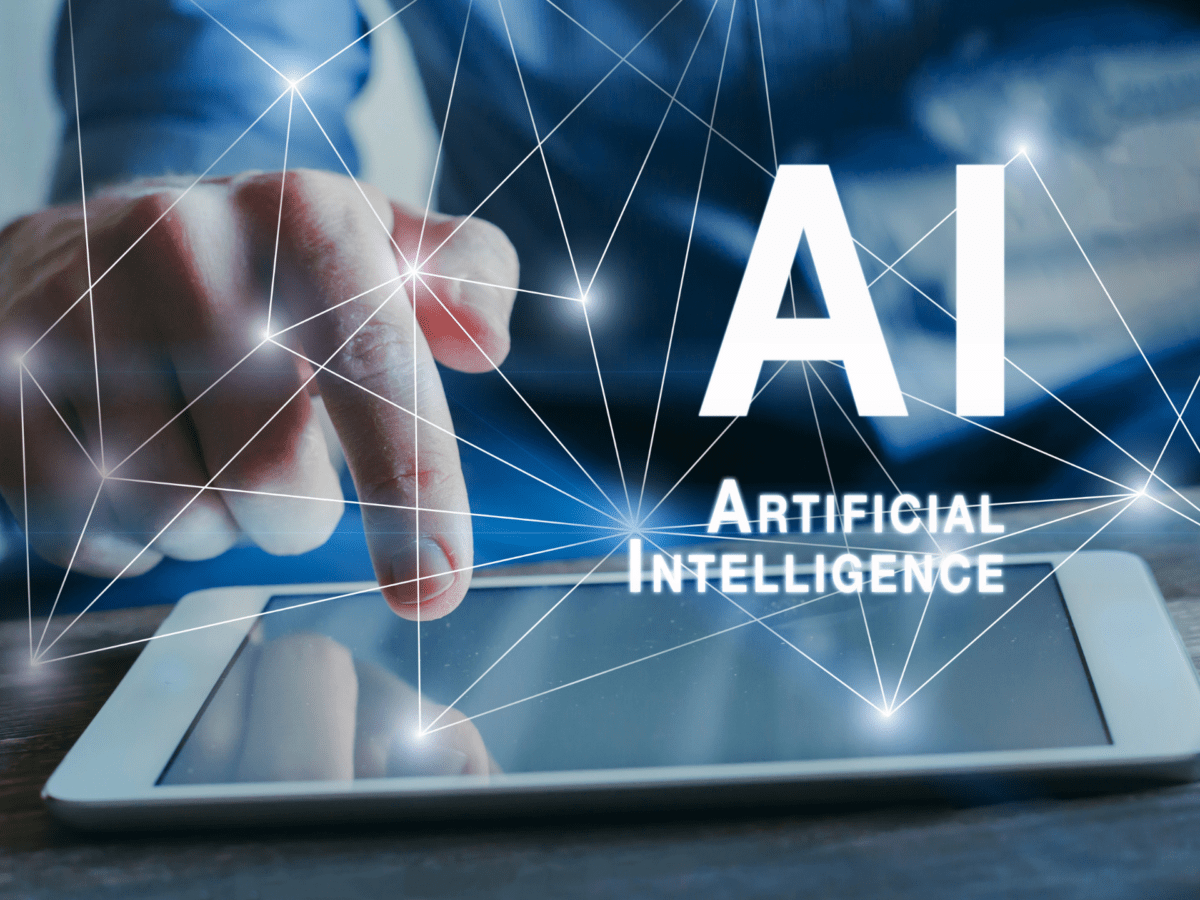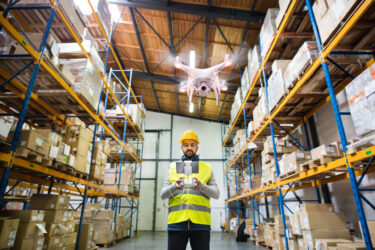

As the fourth industrial revolution continues, the COVID-19 pandemic served as a wake-up call for many organizations and, at the same time, has proved to be an opportunity for innovation, collaboration, and sustainability. According to a recent report by Mckinsey & Company, the COVID-19 pandemic pushed the companies over the tipping point of technology and transformed business forever.
Top researchers and economists called for world economies to emphasize health care and three significant pathways to action that businesses must adapt on the long road to recovery.
Hence, considering the above, we have curated a list of top 10 Technology trends for the next ten years that would play a crucial role in supporting companies and economies to thrive and, at the same time, push the envelope of tech trends. Read till the end to see the bonus 11th prediction, a hidden gem trend.
So which trends made it to our list?
- So which trends made it to our list?
- 1. Datafication of the World – The Internet of Behaviours (IoB)
- 2. Artificial Intelligence and Machine Learning – The buzz continues
- 3. Edge Computing – A distributed computing paradigm
- 4. Software 2.0 – The future of programming
- 5. Blockchain – Digital currency, digital trust, and beyond!
- 6. Quantum computing and computing power – The next giant leap
- 7. Digital Humans – Life in the Metaverse
- 8. Talent Engagement and Retention – A challenge
- 9. Hyperautomation – More than just task automation
- 10. Clean energy and tech – Sustainability is critical
- 11. DeepTech – the Hidden Gem Trend
- Recommendations for your business to keep up with the technology trends
- We can help you!
1. Datafication of the World – The Internet of Behaviours (IoB)

The sheer volume of data generated globally reached beyond 79 zettabytes in 2021 and is projected to reach 181 zettabytes over the next five years. Data, the new, is a critical enabler that fuels most tech trends, even though some believe it is taking humanity in a direction where billions are earned through billions of wasted man-hours. Making sense of this enormous amount of data and determining its value through analytics and big data techniques had come to be known as the Internet of Behaviors (IoB) since 2012 – when Gote Nyman coined this term.
The human-generated data, along with the machine-generated data (through the Internet of Things and other similar sources), can be used by organizations to provide services and products to serve their customers better. This tech trend also refers to how technology can integrate the human experience or habits to offer customers cognitive or physical improvements. Companies that take a deep dive into an efficient collection of quality consumer data and emerging tech such as ubiquitous computing would not only add value to their services for consumers but could also create new revenue sources. The concepts such as Data Fabric would prominently enable seamless integration of data sources for access and processing.
2. Artificial Intelligence and Machine Learning – The buzz continues

From datafication, moving on to the buzz words at the top of the list for businesses today, Artificial Intelligence (AI) and Machine Learning (ML). For organizations, the importance of this tech trend is set to grow at an unprecedented pace. The combined global market size of AI and ML, which stands at approximately USD 408.62 billion, is expected to grow to about USD 1.604 trillion by 2029.
Still, in the relatively early days of development, AI and ML would find more and more sophisticated applications as the technology progresses. It is estimated that over 50% of human interaction with computers will be through AI-generated speech in the next two years. Due to this, consumers would expect businesses to cater to their needs, especially for customer experience and grievances on an increasingly swifter basis. AI and ML would have a significant role to play in this. Machine vision, language processing, speech and gesture recognition, pattern recognition, real-time AI, Embedded AI or ML, AIOps, MLOps, and so on will increase in the next ten years. Healthcare – diagnosis and predictions, transportation and logistics, industrial automation, cybersecurity, public governance, etc., are witnessing rapid growth in AI and ML applications. Concepts such as Real-world AI, Generative AI, and Edge Computing are among the top forecasted trends in the coming years.
3. Edge Computing – A distributed computing paradigm
Technically within this section, we predict two tech trends, Edge Computing and Distributed Computing, which are pretty distinct yet related to each other and will move closer to each other in the coming years. The processing power of microchips and the use of the industrial internet is on the rise, whereas their size is shrinking by the day. It has opened new horizons for computing at the edge and hybrid-cloud or multi-cloud infrastructure as a part of distributed computing. There are several advantages of decentralized computing, from data security and privacy to lower power and bandwidth requirements to enabling near real-time processing and decision making. In the coming times of hyper-automation and connected everything, Edge Computing would provide an effective means to reduce the amount of data being transmitted, however with efficient results.
For organizations, the significant advantages of adopting Edge computing over the cloud would mean increased privacy control and reliability, on the one hand, whereas lower bandwidth, latency, and security concerns on the other. All of which contribute to more savings and increased profits. Organizations adopting such a paradigm, as compared to the cloud, would also be better equipped to serve remote consumers and employees, due to whom sectors of hybrid workplaces and virtual services are expanding.
4. Software 2.0 – The future of programming
We are well and truly in the direction of low-code or no-code programming. It would work in two different ways. First, the neural networks and ML would write the code to develop new software or second graphical interfaces for programming. Creating complex applications (even artificial intelligence apps) with simple modal windows and drag-and-drop actions would be possible. It will reduce complexity, and coding skills wouldn’t limit any individual!
For organizations, it would mean rapid scaling, more deployment of data enriched AI-based applications, lower development costs, and acceleration of large-scale digital transformation. An essential aspect for any organization to adapt to this shift in programming paradigm would be to work on a cultural change towards agility and cross-functional collaboration. For Software 2.0 to succeed for any company, the business and IT aspects must come closer and mingle well. Hence ensuring that desired business and technology outcomes.
5. Blockchain – Digital currency, digital trust, and beyond!
In 1991, Stuart Haber and W Scott Stometta described a cryptographically secured chain of blocks for the first time. Years down the line, under the pseudonym Satoshi Nakamoto, developer(s) released a white paper and implemented the first blockchain as the public ledger for bitcoin transactions. Fast forward today, and there are over 64 active use cases across 200 sectors.
The main benefit of blockchain technology is that data can only be added to the existing data. No one can change or delete it, a property that gives the term chain to it. Hence it is very secure and transparent. Blockchain includes public and private chains, smart contracts, information realization, an end-to-end chain of trust, distributed ledgers, and non-fungible tokens (NFTs).
Organizations can benefit from custom solutions such as Decentralized Applications (dApps), Software & hardware wallets, Enterprise infrastructure deployment, and Blockchain integration in existing operations. Some of the major sectors where blockchain has enormous potential: Logistics, Internet of things, Manufacturing, FinTech, InsurTech, and RegTech.
6. Quantum computing and computing power – The next giant leap
According to multiple market researchers, futurists, and technocrats, the next generation of computing would unlock the answers to queries that have bewildered scientists and society for ages. Computing is predicted to be the next giant leap in this area, with capability far beyond what we have seen so far and the ability to complete tasks that have been deemed impossible for traditional computed.
Unprecedented opportunities lie ahead for businesses with quantum computers, especially in the first-wave sectors such as transportation and logistics, renewables, new materials, advanced manufacturing, and financial services. Quantum computing also has a vital role in quantum cryptography and cybersecurity. Quantum AI, hyper-automation, and ubiquitous computing will also grow with advances in computing in the coming years.
7. Digital Humans – Life in the Metaverse
Our future as humans seems more and more related to digital tech. Concepts such as the Digital Twin of a person are no longer from a sci-fi movie but are becoming a reality. The advances in technologies such as augmented reality (AR), virtual reality (VR), extended reality (XR), and digital multiple experiences (DMX) are coming together to form a parallel virtual verse where avatars could exist as a digital twin of any individual. The recent launch of Metaverse – 3D virtual spaces, has opened the flood gates for advances in digital capabilities.
Even today, the social media presence and use of internet technologies contribute to the digital profiles of individuals being created by big tech. As the policies and understanding of these new technologies catch up, the users would increasingly have more access to their digital human identity and use it to transact in the digital spaces or the virtual verse. The COVID-19 pandemic accelerated the process of digitalized social and professional interactions, which has fueled this concept of digital humans further. Organizations need to be prepared for “digital humans” as their customers compared to the current conventional ones.
8. Talent Engagement and Retention – A challenge
You might wonder why would Talent engagement and retention make it to the list of tech trends for the coming years. Well, there are some very haptic arguments for it. The availability of tech talent with the required skills is a massive challenge for tech-driven organizations. Research shows that Talent management is one of the key aspects for technology companies in the times to come.
Organizations need to think about other factors, especially going beyond compensation as the driving force behind talent acquisition or retention. Emerging technologies such as big data analytics, AI, and machine learning would play an essential role in employer branding and shaping organizational cultures. Organizations would have to dig deep to create an appropriate balance for people with flexibility in working hours and format, diversity, inclusion, and equity.
An often overlooked barrier to talent management in technology industries is that the technology career paths don’t seem as clear as career tracks in corporate functions. To retain and attract desirable talent, organizations need to provide upskilling and growth platforms to current and future employees.
9. Hyperautomation – More than just task automation
More and more technologies are invested in business processes, and more automation is introduced. Hyperautomation is a systematic and business-centric approach for identifying, vetting and automating everything in a company that can be automated. According to recent market research, for businesses, hyperautomation is no more just an option that can be overlooked; instead, it has become a key to survival.
Technologies such as AIOps and MLOps are aiding in moving beyond conventional automation that aims at just automating repetitive tasks. Hyperautomation facilitates scalability, consistency, accuracy, speed, remote operations, cost reduction, and description of traditional business models.
10. Clean energy and tech – Sustainability is critical

Energy drives all digital technologies, and developing clean and sustainable source(s) of energy is a fundamental challenge for the coming decade(s). At the same time, clean-tech is emerging from the desired trend of living a sustainable lifestyle. These technologies, clean energy, and clean-tech have a massive void for businesses to fill in, not just for the coming decade but also into the future.
Clean-tech trends include renewables, sustainable consumption, power-efficient infrastructure, green logistics and transportation, and waste management. The price tag in the industry’s clean-tech is very high for wider commercial diffusion. It is projected that widespread adoption and disruption will be experienced in various sectors with the development of associated technologies in the next decade and beyond. There lie several new business platforms and ample scope for current industries to enter new markets and diversify their offerings by keeping pace with the operational and technological advancements.
Several avenues are being explored in the clean energy industry to obtain zero-carbon energy solutions; nuclear fusion, green hydrogen, and biofuels are trending apart from more popular renewable sources such as solar, wind, and tidal/hydro.
11. DeepTech – the Hidden Gem Trend
DeepTech refers to technology that evolves based on tangible scientific advances and discoveries or engineering innovations. The European DeepTech companies are already valued at over USD 740 Billion USD and are experiencing accelerated growth.
DeepTech can be considered an umbrella of all the technologies listed in the top 10 tech trends above but aims to solve significant issues such as climate change, food shortage, clean energy, and chronic diseases. In short, it addresses all the sustainable development goals.
The world economic forum has put out four vital points for DeepTech industry startups that would come in handy. (i) Unbiased technology evaluation is vital, (ii) Innovation architecture design should take into consideration particular risks, (iii) Efforts to counter the shortcomings of the corporate top-down venturing approach should be given emphasis, and (iv) Concentrate on use cases rather than technology.
Recommendations for your business to keep up with the technology trends
Knowing the key technology trends for the next decade is not good enough. As an organization, you must act rather than react at the end moment. Below are a few key recommendations on what you can do for your company to be prepared for the coming decade.
Key points:
- Have a precise aim or purpose for integrating technology into your business at DAC. Digital, we call it, deducing the aim or purpose of the “Workshops of Discovery”. It is also the first step we follow with all our clients, enabling clarity and understanding of existing software and any project’s concepts and scope.
- Invest in people, upskilling talent, enhancing human-technology partnerships, security, and hyper-automation for business Ops.
- Drive the technology adoption as a continuous process rather than occasional disruptions.
- Adopt an incremental approach to new technology integration.
- Custom solutions or, at the least, personalized solutions for your organization would yield the most desirable results.
We can help you!
PhD Yash Chawla
R&D Communications Advisor, DAC.digital | Asst. Professor, Wroclaw Tech.
Yash is a researcher, academician, and consultant in the field of marketing and innovation management, with keen interest in marketing communications, creative thinking, and sustianable development. He strives to make a positive difference for students, professionals and the society.





